
Montevideo is the capital and largest city of Uruguay. According to the 2011 census, the city proper has a population of 1,319,108 in an area of 201 square kilometers (78 sq mi). Montevideo is situated on the southern coast of the country, on the northeastern bank of the Río de la Plata.

José Gervasio Artigas Arnal was a soldier and statesman who is regarded as a national hero in Uruguay and the father of Uruguayan nationhood.
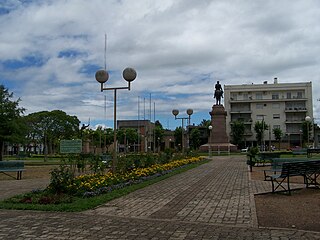
Salto is the capital city of the Salto Department in northwestern Uruguay. As of the 2011 census it had a population of 104,028 and is the second most populated city in Uruguay, after Montevideo.

Gerardo Hernán Matos Rodríguez, also known as Becho, was a Uruguayan musician, composer and journalist.

According to the World Travel & Tourism Council (WTTC) the travel and tourism sector of Argentina was moving towards recovering its pre-covid pandemic contribution to GDP in mid-2023, led by Buenos Aires.

Palacio Barolo is a landmark office building, located at 1370 Avenida de Mayo, in the neighborhood of Monserrat, Buenos Aires, Argentina. It stood as Buenos Aires' tallest building for more than a decade until the construction of the Kavanagh Building in 1936. Its twin brother, Palacio Salvo, is a building designed and erected in Eclectic style, built by the same architect in Montevideo.

Pascual Contursi was an Argentine poet, singer, and guitarist. He composed lyrics for 33 tango compositions – many well-known.

"La cumparsita" is a tango written in 1916 by the Uruguayan musician Gerardo Matos Rodríguez, with lyrics by Argentines Pascual Contursi and Enrique Pedro Maroni. It is among the most famous and recognizable tangos of all time. Roberto Firpo, director and pianist of the orchestra that premiered the song, added parts of his tangos "La gaucha Manuela" and "Curda completa" to Matos' carnival march, resulting in "La cumparsita" as it is currently known. "La cumparsita" was first played in public in the old Café La Giralda in Montevideo, Uruguay. The Tango Museum of Montevideo stands currently on that site.

Uruguayan tango is a rhythm that has its roots in the poor areas of Montevideo around 1880. Then it was extended to other areas and countries. As Borges said: "...tango is African-Montevidean [Uruguayan], tango has black curls in its roots..." He quoted Rossi, that sustained that "...tango, that argentine people call argentine tango, is the son of the Montevidean milonga and the grandson of the habanera. It was born in the San Felipe Academy [Montevideo], a Montevidean warehouse used for public dances, among gangsters and black people; then it emigrated to underworld areas of Buenos Aires and fooled around in Palermo's rooms..." This also implies that different forms of dance were originated in the neighborhoods of Montevideo, Uruguay in the last part of the 19th century and in the early 20th century that was particular from that area and different from Buenos Aires. It consists of a variety of styles that developed in different regions of Argentina and Uruguay.
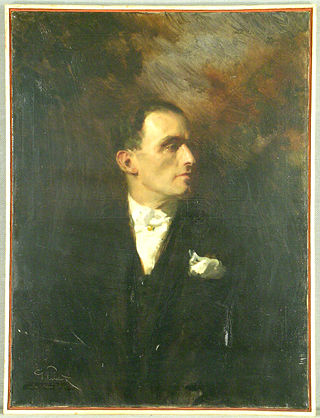
Mario Palanti was an Italian architect who designed important buildings in the capital cities of both Argentina and Uruguay.

Roberto Firpo was an Argentine tango pianist, composer, and leader. Firpo was among the first innovators of the classic tango music genre. He was the establisher of the piano in the tango orchestra.

Plaza Independencia is the most important city square in Montevideo, Uruguay, laid out in the 19th century in the area occupied by the Citadel of Montevideo. In its center is a monument to General José Gervasio Artigas, and below it, his mausoleum.

Avenida 18 de Julio, or 18 de Julio Avenue, is the most important avenue in Montevideo, Uruguay. It is named after the date when the country's first Constitution was sworn in, on July 18, 1830.
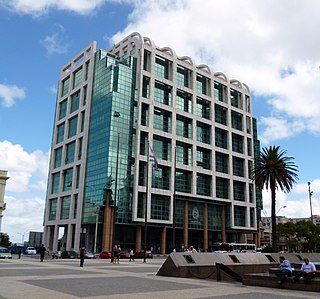
The Executive Tower is the official workplace of the President of Uruguay. It is located in front of the Plaza Independencia, in Barrio Centro, Montevideo.
There are many landmarks in Buenos Aires, Argentina, some of which are of considerable historical or artistic interest.

The Battle of Cerrito, was a battle for the War of Independence of the Viceroyalty of the Río de la Plata, between the royalist forces who had control of the city of Montevideo and the rebel forces of the government of Buenos Aires.
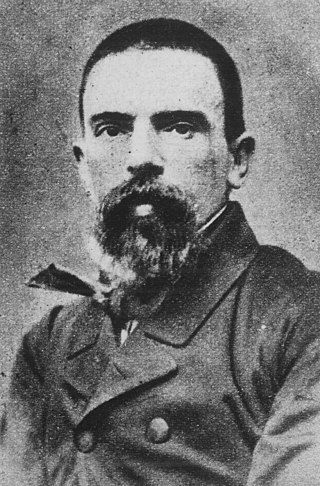
Juan Manuel Blanes was a Uruguayan painter of the Realist school.

Palacio Rinaldi is a building in Centro, Montevideo, Uruguay, located on the Plaza Independencia near its junction with the 18 de Julio Avenue, near the Palacio Salvo.
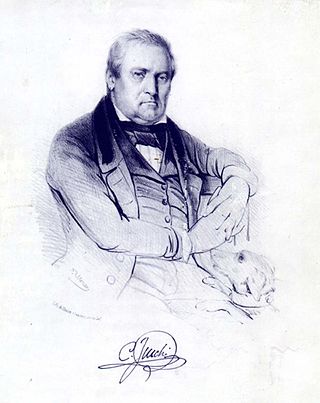
Carlo Zucchi was an Italian architect.






















